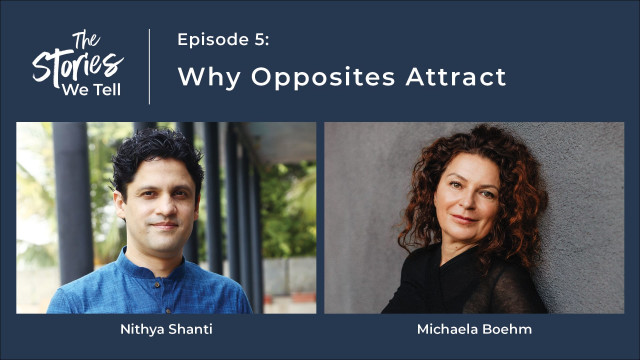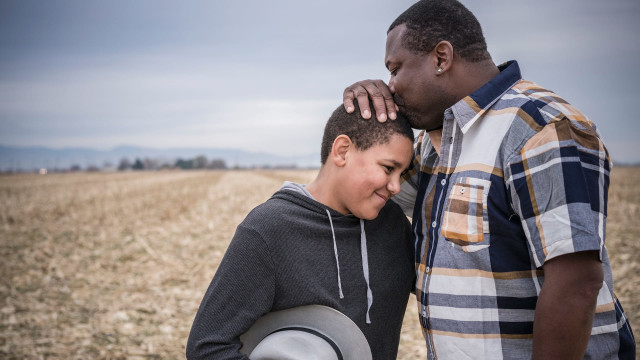How to Connect to Your Ancestors

Growing up, I was the only kid I knew who celebrated Kwanzaa. Between Dec. 26 and Jan. 1, my Caribbean father would put on African music and bring our small family together. My white mother would get out the candles — red, green, and black — and try her best to wrap her lips around Swahili words like habari gani, the traditional Kwanzaa greeting meaning “what’s the news?”
The news was that it was time to honor our ancestors, recognize our Africanness, and reaffirm the values that made up our culture. So we gave thanks to ancestors recently passed, those long gone, and the evolutionary history that brought all humans back to Africa. We blew out the candles, danced to King Sunny Adé, and ushered in the new year in style.
Now that I’m 27, I’m still the only person I know who celebrates Kwanzaa! Kwanzaa is a weeklong holiday that honors African heritage. It was created in 1965 to bring unity and positivity to the African-American community. Two hundred and fifty years of slavery and 100 years of segregation have a way of eroding a people’s cultural identity.
Kwanzaa was an opportunity to reclaim my ancestry from a dominant narrative. When I think of my forefathers, I think of Nigerian fishermen, not slaves shackled and bound. Connecting to my ancestors in this way has unlocked a pride and confidence that I had previously lacked, and I’m now continuously so grateful for those who lived so that I might live.
The Known and the Unknown
Often when people tell me they want to connect more deeply with their ancestors, they mean one of two things. The first is they seek a deeper connection to who they are and why they are the way they are and want to identify a family lineage they can trace. This is an important part of creating a family history that you can share with those who come after you.
On the other hand, some people are more interested in the unknown — ancestors in a more spiritual and metaphysical sense. They want to connect with ancient entities that can help guide and support them, ancestors that go back further than your great-great-grandparents can remember.
These connections can help us feel more fulfilled and supported in our lives, and they are not mutually exclusive. Here are some practical steps you can take to deepen your connection to your more recent lineage, along with the more spiritual side of ancestry.
Honoring Your Family and Lineage
Suppose you didn’t happen to grow up with grandparents full of rich stories of their grandparents, cultures, and experiences. In that case, you might be interested in having a deeper understanding of who your family was and how you relate to them. Especially in the United States, many of us have lost touch with the traditions and memories of our family histories.
One beautiful way to cultivate a deeper connection with your relations, both living and passed, is to encourage storytelling with those still alive, especially elders. I often ask my grandmother to tell me stories about her mother. This humanizes and deepens your connection to those who are still with us.
By creating this connection, you’re not only helping your elders to remember their own lived experiences and rich histories, but you are receiving insight into those who came before you. You might even start to notice things you relate to that you didn’t know about.
Try recording these stories so that you can share them with the next generation!
Another way to connect more deeply to your lineage is to consider the legacies of those who passed on. Ask your living relatives to tell you about these skills and document them. Cataloging the expertise and experiences of our ancestors allows us to receive insight as to how they relate to us and impact us now.
You might discover that you and your great-great-grandfather both had a passion for writing, music, or travel, and this connection can inspire you to continue on that path.
Opening Up to Your Ancestry
For many immigrants, especially in the United States, we’ve essentially sacrificed our original cultures to merge into the American culture. We live in a world that has been irrevocably changed by colonialism and modernity, so very few of us know where we are from.
Many of us feel disconnected from the ancient lineage that we originate, and with that loss comes a loss of tradition and culture. Many of us come from blended backgrounds and have myriad cultures that we originate from; it’s important to acknowledge that we can honor many cultures that have contributed to our being here.
Connecting to our ancestors can start with simply recognizing the sheer number of people who had to exist for you to get here. If you have some idea of where your ancestors are from, you can begin your journey of connecting to them by making an altar with photos of ancestors or the places that are a part of your lineage. Some other great ways to begin cultivating that connection are to cook a traditional recipe from the part of the world where you’re from or take the time to learn an old tradition or language.
Creating a Spiritual Connection to Your Ancestors
Even if you don’t believe our ancestors exist in some way hereafter, they certainly do exist in the way that they’ve contributed to our DNA and gene expression. Whether or not you believe in ghosts, your ancestors have passed traits to you and truly do exist in your body.
Suppose you subscribe to the idea that a spiritual connection with our ancestors is possible like I do. In that case, it’s important to remember that as you seek to create that connection, your ancestors will never judge you. As they transitioned out of this world, they left behind their human limitations — their faults, judgments, and misconceptions.
Humans have connected to their ancestors for millennia; many traditions include a spiritual connection to ancestral guides. It’s only in our more modern generation that we’ve lost this connection.
Ancestral Visualization
You can begin cultivating this spiritual connection to your ancestors in a few different ways. By the time you do this ancestral visualization meditation, consider having dedicated altar space. A beautiful candlelit area is wonderful, but a window or any little nook will do the trick.
Include pictures of those you know and elements of those you don’t. Fill this altar with objects or photos of your places of origin. Material resonance is significant — including candles, incense, and natural elements.
Think of this process like putting money in the bank, but in this case, your currency is attention and gratitude. When you have a minute or think of it, light a candle and take a moment at your altar to say a little thank-you. Thank your ancestors for living so that you could also live. This practice strengthens the connection so that it can be more authentic for you when you begin meditative practices.
After you’ve been taking time to honor and acknowledge your ancestors, dedicate some time to meditate. Either settle into where you typically meditate or create a sacred space for this meditation. Sit down quietly, perhaps light a candle, and put the day behind you. Breathe deeply and clear your mind.
Begin your ancestral visualization by imagining yourself in a beautiful place in nature where you feel familiar and safe. Allow yourself to engage in the details of the space to make it real for you. Once you feel situated and grounded in this newly imagined space, create an intention to meet and connect with an ancestor. This can be one you know of, or you can call on your collective ancestry and be open to who comes to you.
You can treat this process as a figment of imagination or consciousness if that’s what resonates, but the more you ascribe a sense of reality to them, the better your connection will be. Once they come to you, ask questions. Don’t worry about judgment or being offensive; your ancestors are entities that are coming to help you, and they are beyond petty things like judgment.
If you go to an elder for advice, remember they may not know precisely what you should do, but they may have a story or piece of wisdom that can help you on your path. Be flexible and open to the wisdom that you receive. When you’ve finished with them, thank them for coming to you, and allow yourself to go out of the meditation gently.
Be sure to include them in your gratitude practice so you can continue to maintain the relationship and honor the connection that they’ve offered to you.
If you want additional support in using visualization to connect to your ancestors, try this course, Reconnect to Your True Self by meditation teacher Tatum Barnes.
Header photo: FG Trade/E+/Getty Images









